site search
online catalog
A NAPOLEONIC BICORNE
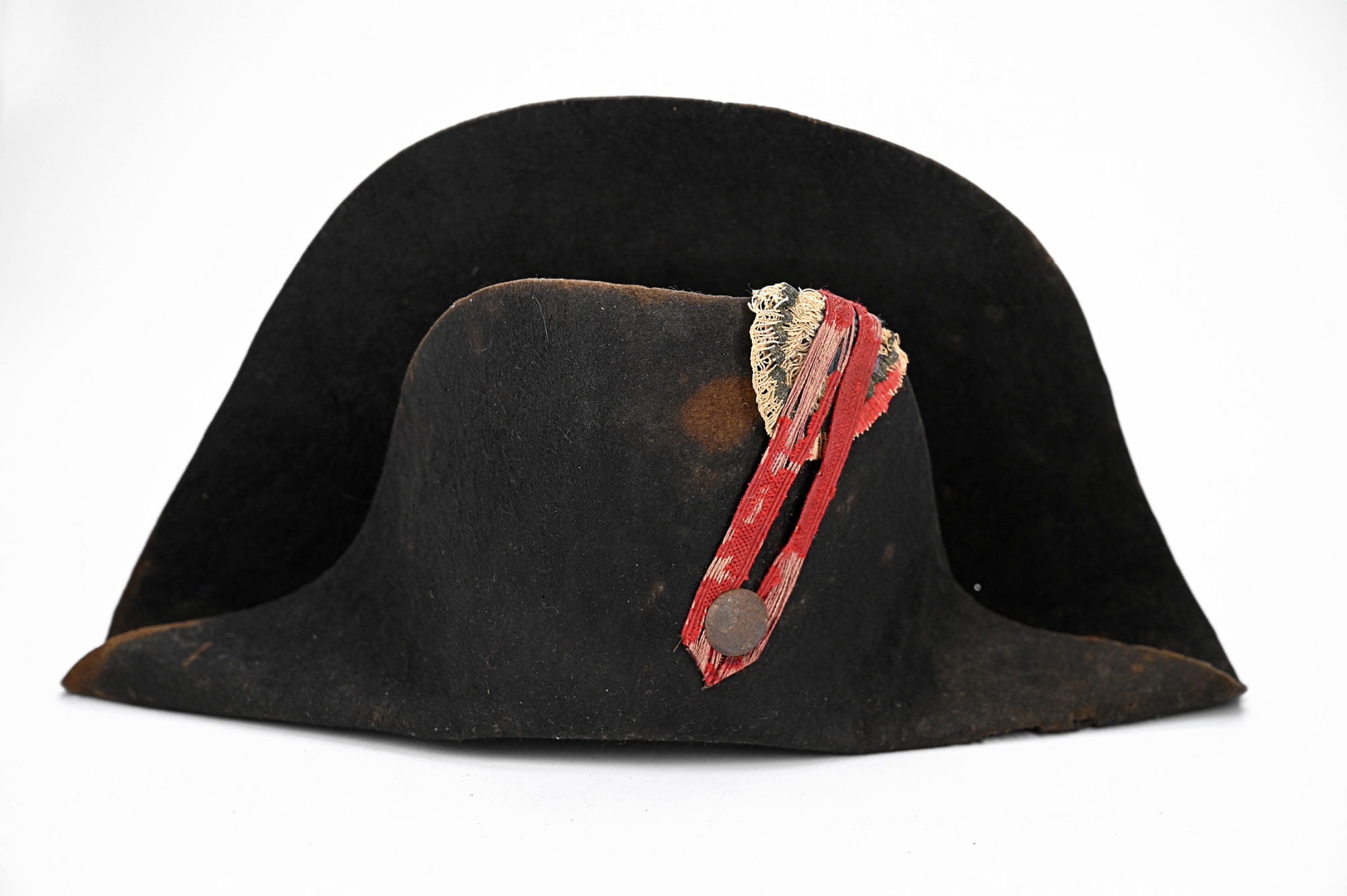
Hover to zoom

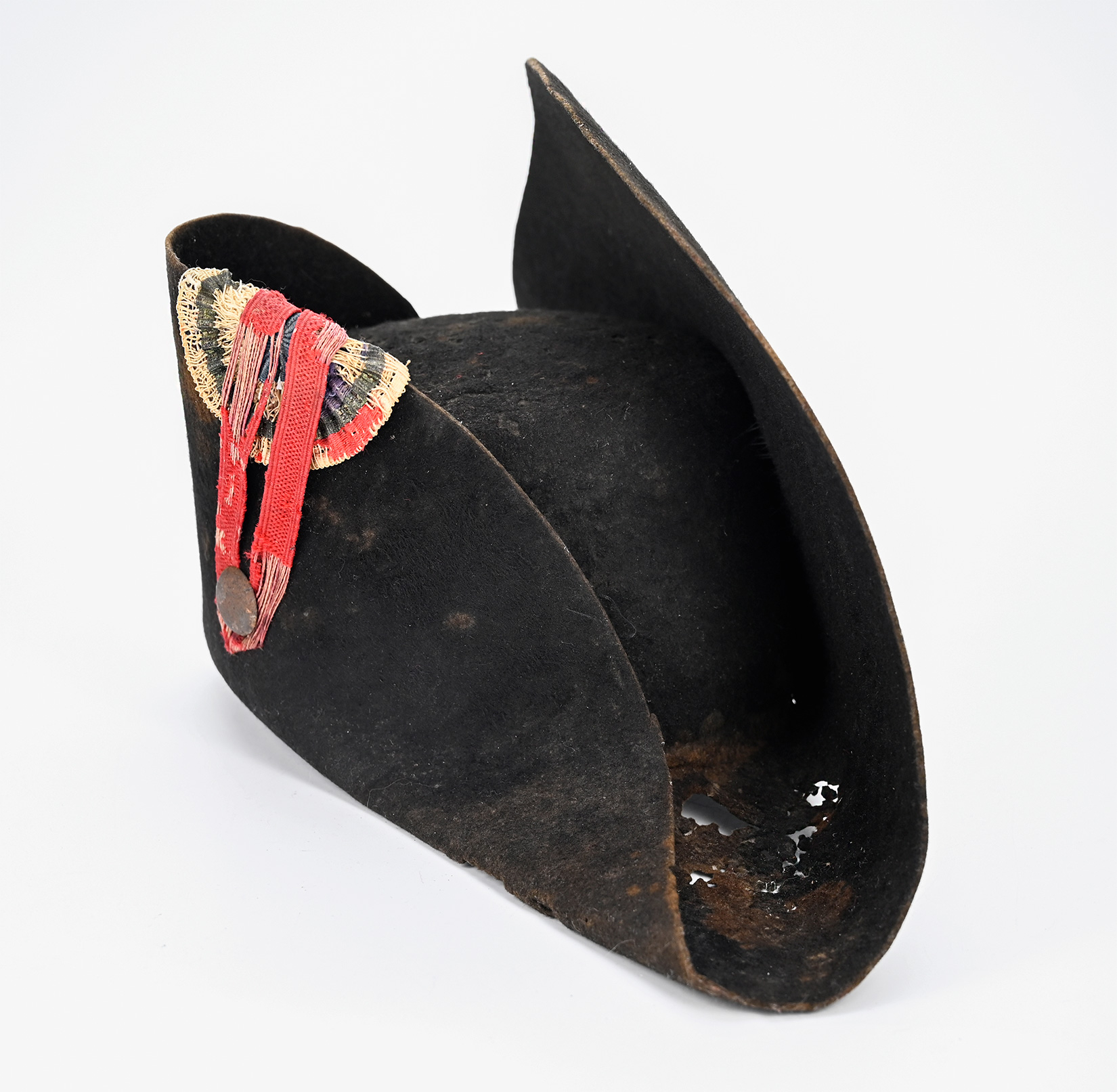
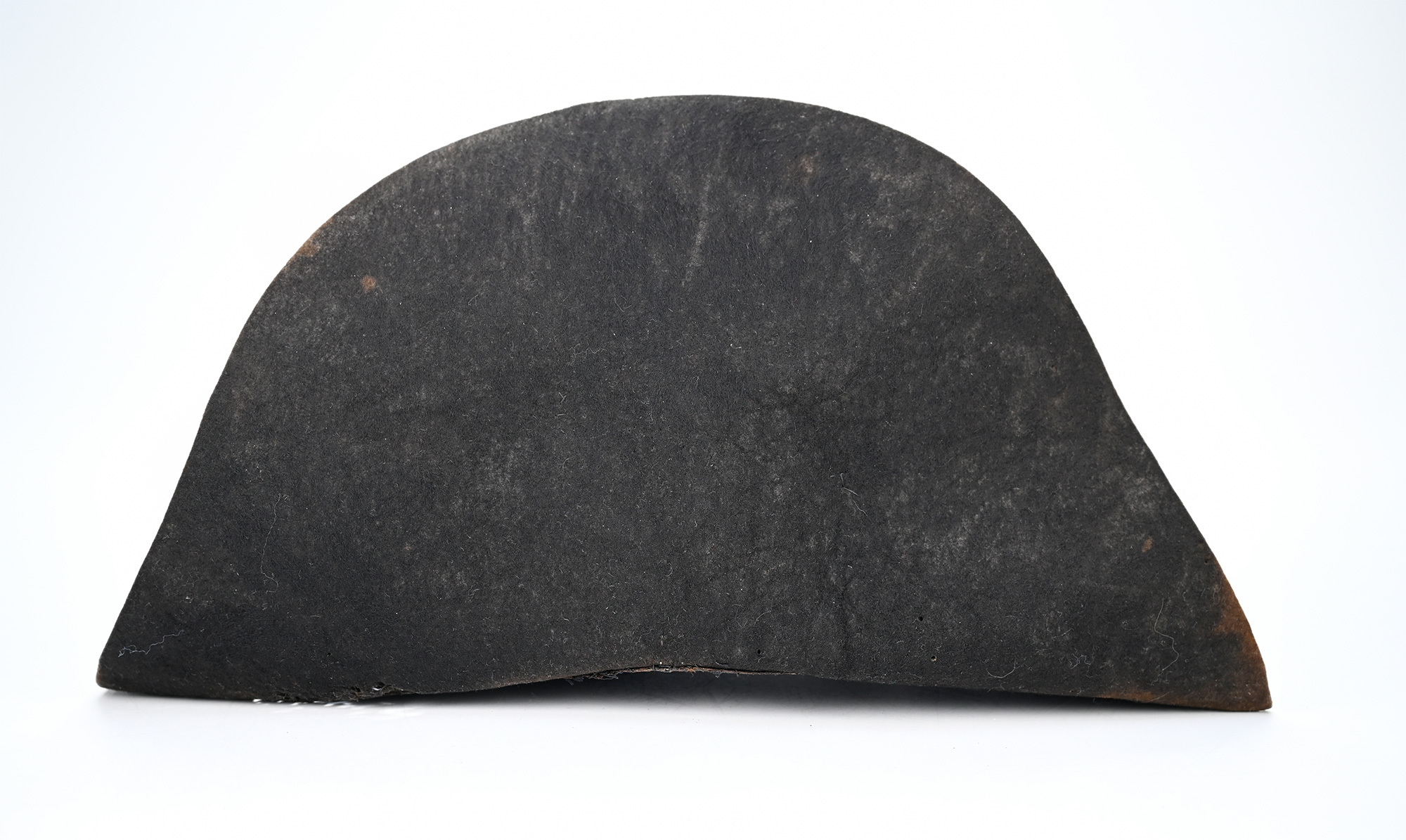
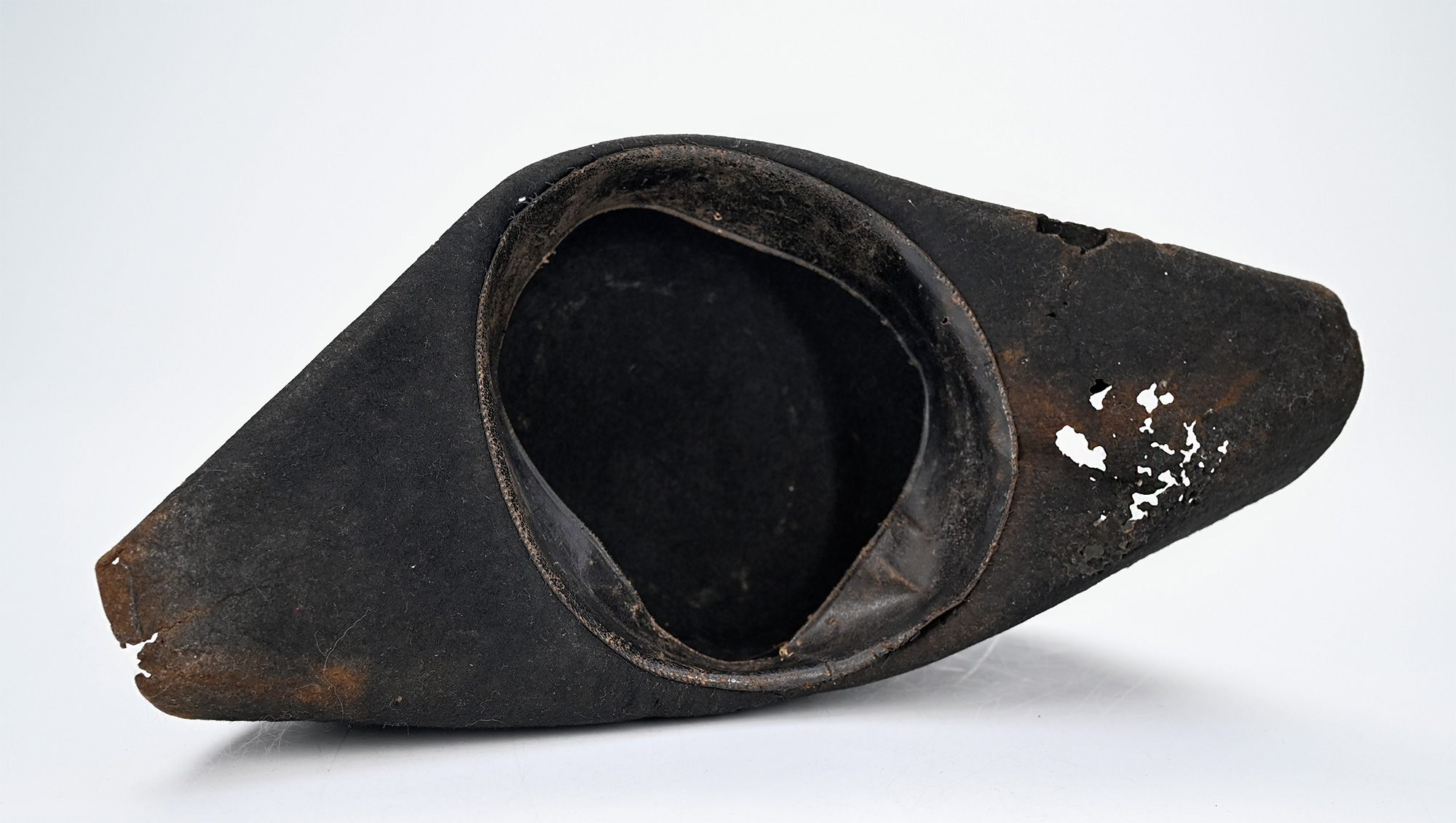
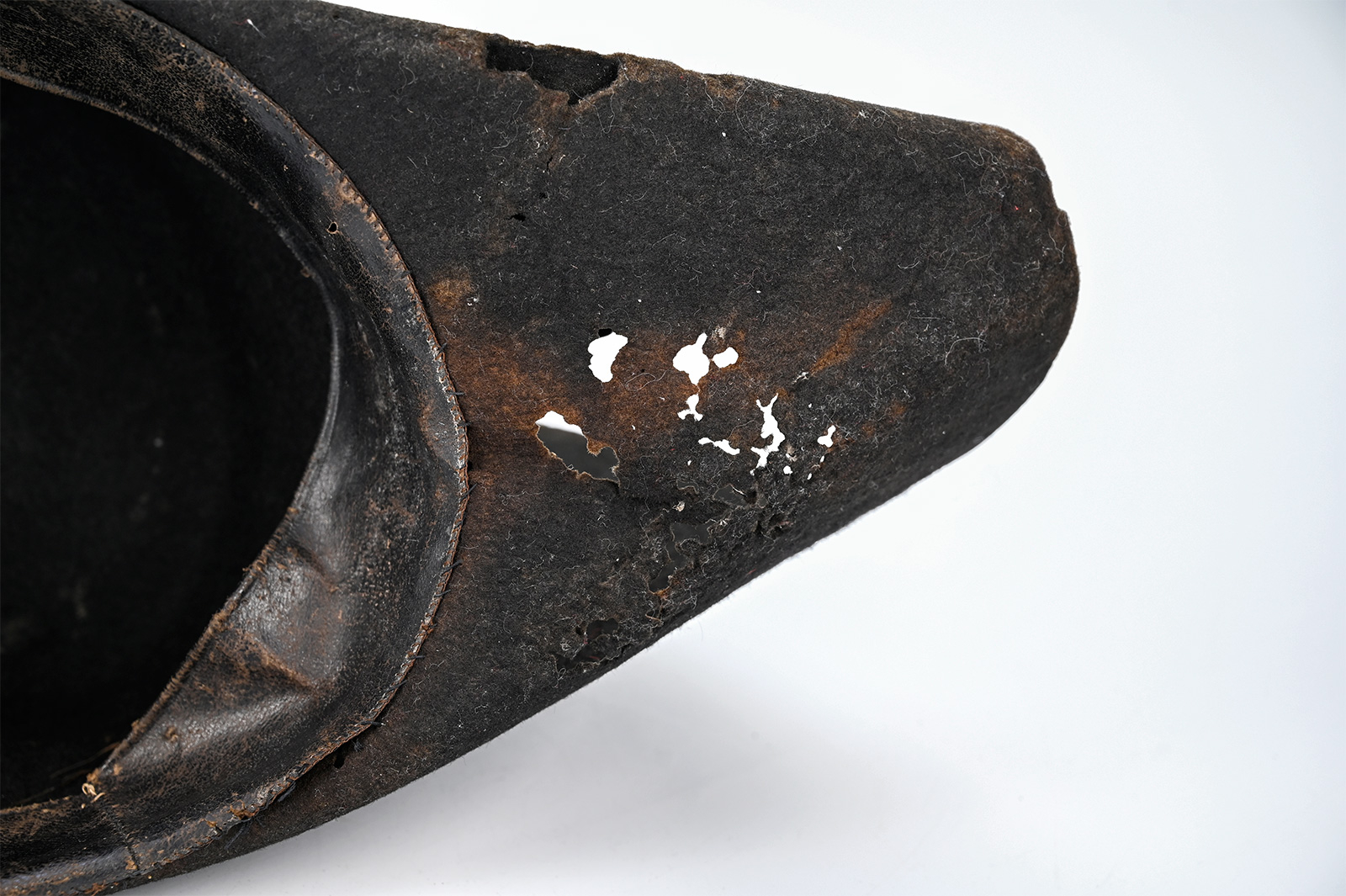
$895.00 SOLD
Quantity Available: None
Item Code: 88-128
"No symbol ever so completely represented a historical character. Fully conscious of the force of this symbolism, Bonaparte made it part of his image early on in the Consulate. He chose two military uniforms, one of the Grenadiers à pied and the other of the Chasseurs à cheval of the Garde, but the way he wore his hat was entirely his own. Whilst most of his officers wore their hats “en colonne”, that is, perpendicular to the shoulders, Napoleon wore his “en bataille”, that is, with the corns parallel to shoulders. His simple and sober outfit contrasted strongly with the officers around him, glorious in their plumed hats. It meant that he was immediately recognizable amongst his troops on the battlefield."
Offered is a hat virtually identical to documented examples worn by the Emperor! In fact, this example of a bicorne has identical dimensions to hats known to have been used by Napoleon himself. Approximately 6 inches in front and 9 inches in the rear this example was worn by an Infantry man in the army of the Kingdom of Italy. It is made from felted beaver the surface of which shows great usage and losses of material, but the general look is wonderful. The original wide leather sweat band is still in place while the cotton draw bag is missing. The original Napoleonic cockade woven in the correct and only way for this period has as well as red, and blue a green band; this of course represents Italy. "According to official historiography, the Italian tricolor first appeared on 14 November 1794, when two students of Bologna, Giovanni Battista De Rolandis and Luigi Zamboni led an uprising against the Austrian absolutist power, and as an emblem of the rebellion chose the cockade of the Paris revolution, but maybe to distinguish it from the French, decided to swap the blue color with green.
On May 18, 1796, in Milan the colors of this cockade were accepted by Napoleon, who gave the Milan Civic Guard, the Lombard Legion and the National Guard a flag with vertical stripes, green, white and red. During this ceremony Napoleon specified that these three colors came from the cockade of the Bologna uprising: "Since they [the two students] chose these three colors, so let them be."
On October 9, 1796, the Italian legion, an emanation of the Lombard Legion, received from Bonaparte a Tricolor flag with the same colors as the cockade of De Rolandis and Zamboni. On 18 October of the same year, the Parliament of the Cispadane Republic, in session in Bologna and Modena, decreed that a flag was to be created with vertical stripes with these three colors, symbol of the new Cispadane Republic in its mission as the first step of a new Italian Republic. The Italian tricolor national flag was then officially established in Reggio Emilia on January 7, 1797, when, as proposed by deputy Giuseppe Compagnoni, Parliament chose a standard or flag of Three Colors, Green, White, and Red."
The red wool "facing" braid that ends with a white metal button sits over the cockade. This red braid is woven in the correct way for the period and represents infantry. The white metal button is original to this bicorne and is certainly National Guard type. By 1805 they and the other allied Italian entities were emerged into The Grande Armee. Italy ultimately provided Napoleon with 200,000 soldiers. In 1806 this style of headdress was replaced universally by the famous shako, but it was with his bicorne wearing soldiers that Napoleon won his most brilliant victories! If you can't afford Napoleon's own for a cool million buy this one for $895. [pe] [ph:m]
~~~~~~~~~~~~~~~~~~~~~~~~~~~~~~~~~~~
THIS ITEM, AS WITH ALL OTHER ITEMS AVAILABLE ON OUR WEB SITE,
MAY BE PURCHASED THROUGH OUR LAYAWAY PROGRAM.
CLICK HERE FOR OUR POLICIES AND TERMS.
THANK YOU!
Inquire About A NAPOLEONIC BICORNE
Most Popular
Historical Firearms Stolen From The National Civil War Museum In Harrisburg, Pa »
Theft From Gravesite Of Gen. John Reynolds »
Selection Of Unframed Prints By Don Troiani »
Fine Condition Brass Infantry Bugle Insignia »
Large English Bowie Knife With Sheath 1870’S – 1880’S »
Imported (Clauberg) Us Model 1860 Light Cavalry Officer's Saber »
featured item
WORLD WAR TWO / KOREA UNITED STATES MARINE CORPS OFFICER’S MAMALUKE SWORD
The drawn sword meas. approx. 36.00 inches long. The blade itself meas. approx. 31.00 inches long x 0.75 of an inch wide at the ricasso. It has a central fuller that starts just above the ricasso and runs for approx. 27.00 inches. The blade surface… (2021-944). Learn More »
site search
Upcoming Events
The shop is currently closed so that we may conduct our annual inventory. We are available by phone… Learn More »


